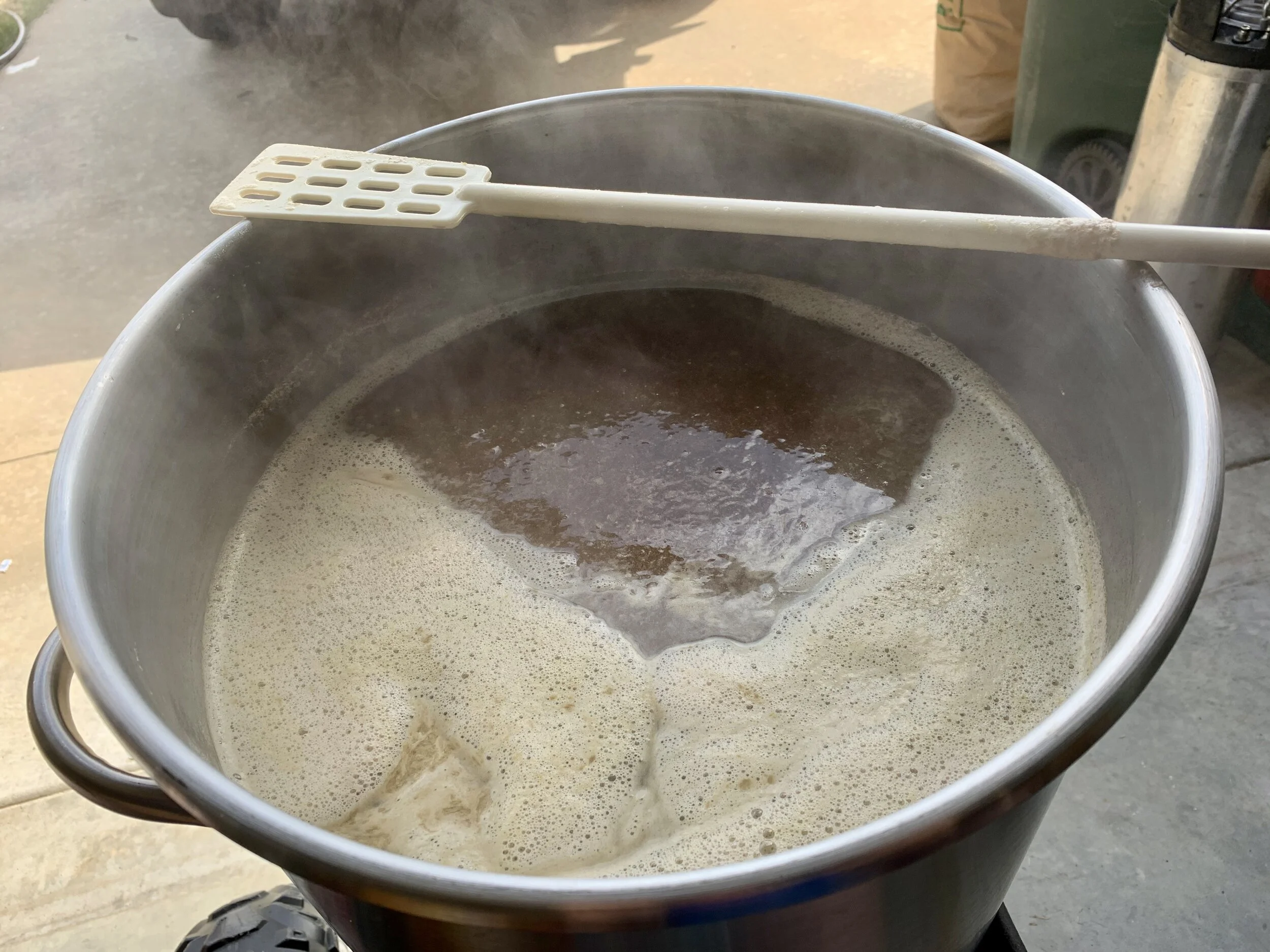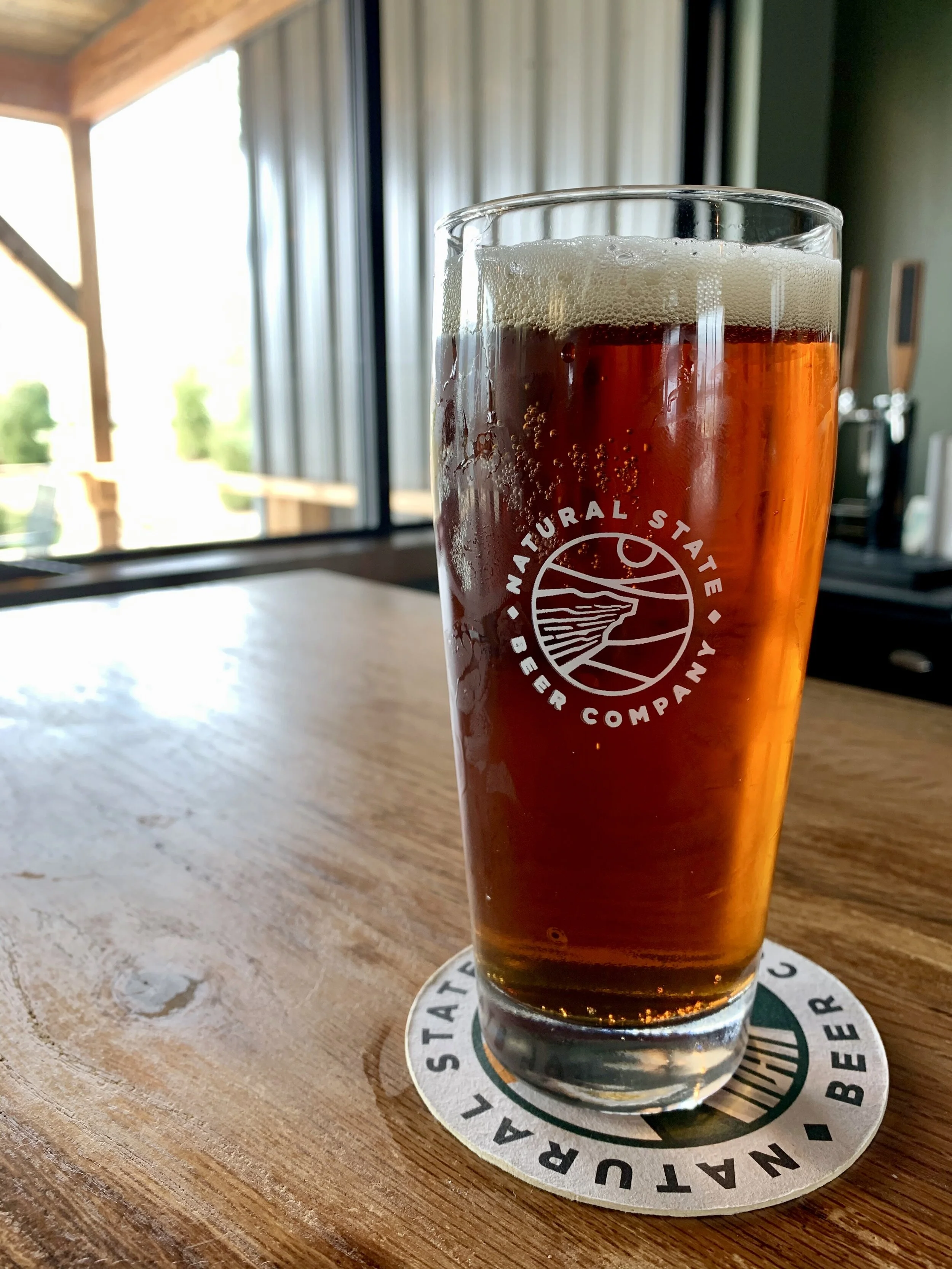I’m a home brewer who brews now
I got into home brewing nearly fifteen years ago, which was just before things really took off in American craft beer. To that point my exposure to non-macros was limited to Sierra Nevada, Sam Adams, and Fat Tire. I knew about good beer, but I wasn’t that far removed from my college years and loads of Michelob Light.
Some guys at my church were avid brewers back then. I joined their Sunday School class, and over the course of a few months they introduced me to their beer. I was quickly interested in making my own. The ability to mix and match ingredients and brew literally anything seemed amazing to me. Once I started I couldn’t get enough.
At my peak—between 2008-2010—I was brewing once or twice a month. At five gallons per batch, that’s roughly equivalent to two to four cases of beer every thirty days. Not an insignificant amount!
I went from extract brewing to using grain, which—to use an analogy—is like ditching canned biscuits to make them from scratch. I experimented with ingredients and brewing methods, yet I made a lot of IPAs, pale ales, and other traditional styles as well.
I’ll admit that I was my own worst critic, often unable to enjoy my own beer because of some perceived flaw (which, ironically, others never noticed). But I had fun tweaking the process in an effort to make it better. And nothing beats the smell of a boiling kettle of malt and hops on a Saturday afternoon. Brewing beer served as a form of rest and relaxation.
Brewing is hard work though. They say it’s 90% cleaning, which is probably true. Most bad beer is due to contamination at some point in the process. Breaking down equipment to clean and sanitize is both necessary and time-consuming. There simply is no shortcut.
Additionally, you’re moving a large amount of water up, down, and all around your brewing space. Lifting five gallons of 170-degree water is not only backbreaking, but quite hazardous as well.
It doesn’t have to be that hard. There is plenty of fancy home brewing equipment available these days. You can spend a fortune on a home brewery and literally get a scaled-down version of the real thing, complete with pumps and digital controls that make the whole process push-button convenient.
My home brewery probably takes the middle ground between simple and advanced. I’ve invested here and there, but haven’t gone all out. My wife would kill me if I spent the thousands of dollars that other dedicated (and obsessed) home brewers spend on their rigs.
I have two 10-gallon drinking coolers—the round ones—converted into mash and lauter tuns. They have been used by all-grain brewers for many years now. They hold their temperatures well and I’ve gotten good results with them.
I don’t have pumps, so I still depend on gravity and racking tubes to move liquid vessel-to-vessel. That part can be a hassle sometimes.
I did spring for a 10-gallon stainless steel brew kettle with a ball valve and built in thermometer. It’s a step up from the aluminum turkey fryer I started out with. And my most recent addition to the brewery was a stainless conical fermenter with racking arm. It replaced the traditional glass carboy I used for many years.
I listened to hundreds of hours of brewing-related podcasts when my interest was at its peak. James Spencer’s Basic Brewing Radio was my favorite for straightforward information and technical know-how.
I also added dozens of beer-focused books to my home library. I was obsessed with the alchemy of beer and the culture that surrounds it.
Early on, I heard many older home brewers talk about how their passion for the hobby waned for a period of years, only to be rediscovered later. At the time I was confused. Why would they give up on something that was so much fun?
As my family expanded from one to two, and eventually to three children, I suddenly understood where they were coming from. My time slowly became my kids’ time, and finding a whole day to set aside to make beer became an impossible task. I’m sure those guys were faced with the same choices.
I made a batch of beer sometime in 2015, and then the brewing equipment began collecting dust in a corner of my garage. Family and work went on the front burner, and the hobby I had been obsessing about for years moved to the rear.
Beer is a multi-faceted thing, of course, so it didn’t disappear completely. The local beer boom has definitely held my interest, and local access to the best beers from elsewhere—e.g., Stone, Bell’s, Cigar City, et al.—has improved, offering more choice on those weekly beer runs.
Yet for the past five years, I’ve been a home brewer who doesn’t brew anymore.
That all changed because of COVID-19.
I’ve been stuck at home for the past three weeks, practicing social distancing to help mitigate the spread of the virus. My company told us to work from home. My kids’ schools are closed, as are restaurants, bars, and gyms throughout the region. Life has come to a near standstill as we try to figure out just how bad things might get…and how quickly they can get back to normal.
Being at home does have it’s advantages, though. There’s more time to read. There’s more time to write. And as much as we get on each other’s nerves, my family has enjoyed finding things to do together to bide our time.
It has also given me a chance to catch up with an old hobby. You see, I was out in the garage cleaning up one day, when a shiny brew kettle caught my eye. A surge of inspiration came upon me. Right then and there I vowed to brew again.
And brew I did.
A week ago I brewed a recipe for Sierra Nevada’s Resilience IPA. It’s currently finishing up fermentation right now. I hope to keg it in a few days. Then I’ll brew a clone of Dogfish Head’s Indian Brown Ale. And then after that, who knows?
What’s important is that I’m a home brewer who brews now. And that’s a silver lining to this COVID-19 experience.
The recipe I brewed on March 28, 2020:
11 lbs American 2-row
1.25 lbs Crystal 60L
Mash at 152 F for 60 minutes
80-minute boil
1 oz Centennial 80 minutes
1 oz Centernnial 15 minutes
1 oz Cascade 15 minutes
.5 oz Centennial whirlpool
.5oz Cascade whirlpool
.5 oz Centennial dry hop
.5 oz Cascade dry hop
Safale US-05 yeast
Ferment at 62 F
Estimated original gravity 1.058
Estimated final gravity 1.013
Estimated ABV 6.0%













